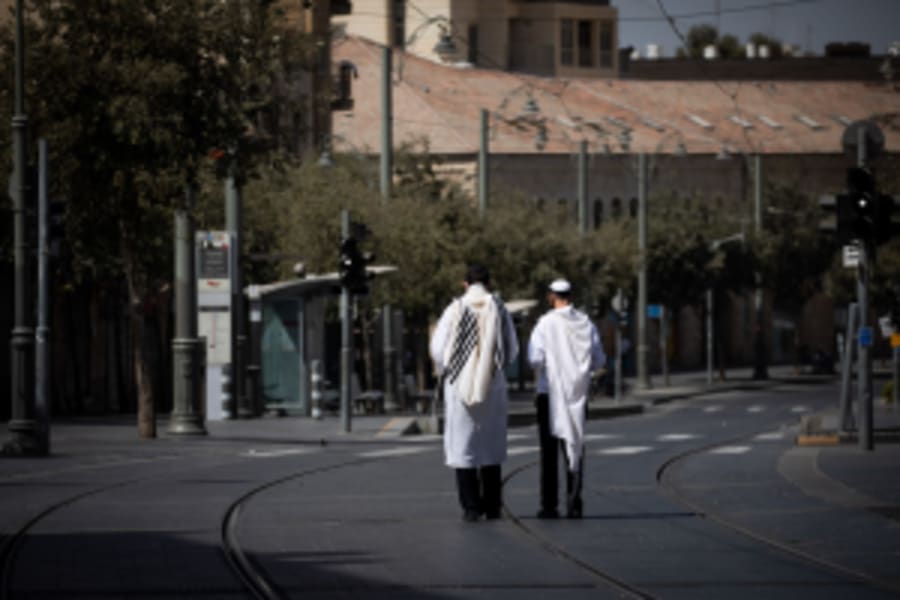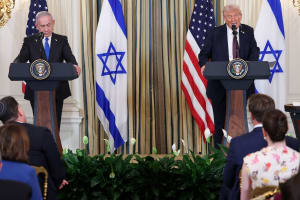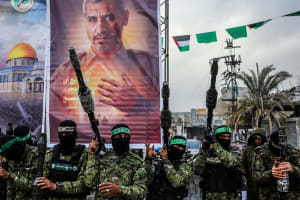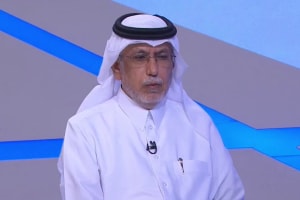As Hamas faces ‘its worst financial crisis,’ humanitarian aid distribution becomes point of contention in ceasefire talks
Demand by Hamas to exclude GHF from aid distribution appears to support claims of aid seizure

Following a revamp of the humanitarian aid distribution method in the Gaza Strip as part of Operation Gideon’s Chariots, including the launching of the U.S. and Israel-backed Gaza Humanitarian Foundation (GHF), a new report claims that Hamas is facing “its worst financial and administrative crisis in its four-decade history.”
The Washington Post report, based on interviews with Palestinians, Israeli analysts, IDF officers and sources close to Hamas, says that the terror organization is no longer able to pay the salaries of its fighters, rebuild or refurbish tunnels damaged by IDF strikes, or even pay the salaries of civil employees, such as government ministers and police officers.
Part of the justification provided by Israel and the United States for establishing the GHF was the continued claims by the IDF, supported by hostage testimony and the reports of Palestinians living in the Strip, that Hamas was confiscating significant portions of the humanitarian aid entering the Gaza Strip under the oversight of UN agencies and partners.
While the UN has officially denied those charges, at one point, early in the war, the UNRWA posted a comment to social media accusing Hamas fighters of taking humanitarian aid from one of its warehouses. The post was deleted within a couple hours, but not before being viewed by several thousand accounts.
The UN has also accused the GHF of endangering Palestinians in Gaza by requiring them to walk long distances – often near active combat zones – to receive humanitarian aid. Additionally, the UN has cited reports from Hamas-affiliated officials claiming that IDF soldiers have killed Palestinians at some of these aid distribution sites.
For its part, the GHF has denied many of the reports of violence at its sites, or accused Hamas of threatening and even attacking its aid workers. The GHF has provided evidence for the claims, while also calling on the UN and other NGOs to partner with it in order to ensure that more aid reaches the most possible number of Gaza residents. The UN has flatly refused to work with the GHF and ignored its repeated requests to find a solution to the aid problem.
The Washington Post report cites an anonymous Gaza contractor who confirmed stories of Hamas diverting aid, demanding payment from local merchants who resell the UN-supplied aid which is meant to be distributed freely, and even killing truck drivers who refused to pay protection fees to Hamas.
The Post report cited a man from Deir al-Balah, where the IDF has been operating recently, who said that “Hamas sees aid as its most important currency.” He described how people affiliated with Hamas received regular supplies of humanitarian aid, even while the broader population suffered from food and water shortages.
🧵Ahmed Fouad Alkhatib, a Palestinian American who leads the advocacy group Realign for Palestine, said that Hamas repeatedly modified its strategy for profiting off aid and commerce while counting on the humanitarian crisis to bring the war to an end. https://t.co/meywroqhLm
— Ahmed Fouad Alkhatib (@afalkhatib) July 22, 2025
The UN and several NGOs have accused Israel of restricting aid entry into Gaza, a charge which COGAT denies. In a recent post to 𝕏, COGAT noted that “approximately 950 humanitarian aid trucks are awaiting collection on the Gazan side of the Kerem Shalom and Zikim crossings.” So far, the UN and its partner NGO organizations have not collected or distributed that aid.
While the UN and NGOs deny the seizure of aid by Hamas, and insist that their interest is only in ensuring aid reaches the largest amount of people, Hamas is insisting that the UN and the Palestinian Red Crescent control all humanitarian aid entering Gaza as part of the 60-day hostage-ceasefire agreement. The terror group is also demanding that GHF not be allowed to distribute aid at all during the ceasefire period. The demand appears to lend credence to the claim by some analysts that the GHF disrupted one of Hamas’ main income streams during the war.
Another significant source of funding for Hamas, which was stopped as a result of the war, is money transfers from Qatar. Despite promises that the funds would only go to the population, there were consistent reports of Hamas officials benefiting from the Qatari aid over the years.
A report in The Jerusalem Post, identified another source of funding for Hamas that has come under attack, digital currencies, often referred to as cryptocurrency. The U.S. Department of Justice recently announced the seizure of around $2 million in cryptocurrency used by the terror organization.
U.S. Attorney-General Pam Bondi said the seizure shows the U.S. is “aggressively dismantling the financial infrastructure of terrorism.”
“Terrorist organizations like Hamas and their affiliates rely on shadowy financial networks to fund their deadly operations,” Bondi said. “By seizing millions in cryptocurrency, the Justice Department is aggressively dismantling the financial infrastructure of terrorism and refusing to allow our digital currency platforms to become safe havens for terrorist financing.”
What you need to know about humanitarian aid for #Gaza:
— COGAT (@cogatonline) July 22, 2025
➡️Since May 19, and in accordance with the directive of the political echelon, aid enters Gaza through two primary channels:
1. Distribution sites operated by @GHFUpdates, where weekly food packages are provided to… pic.twitter.com/eLIQ1ELY6M
Is All Israel News’ faithful reporting important to you? Be part of it—help us continue by becoming a $5/month supporting partner.

The All Israel News Staff is a team of journalists in Israel.
You might also like to read this:















